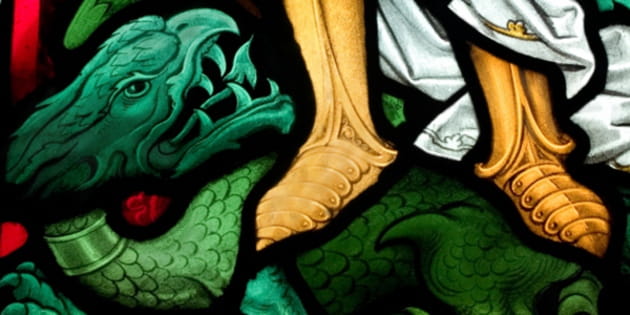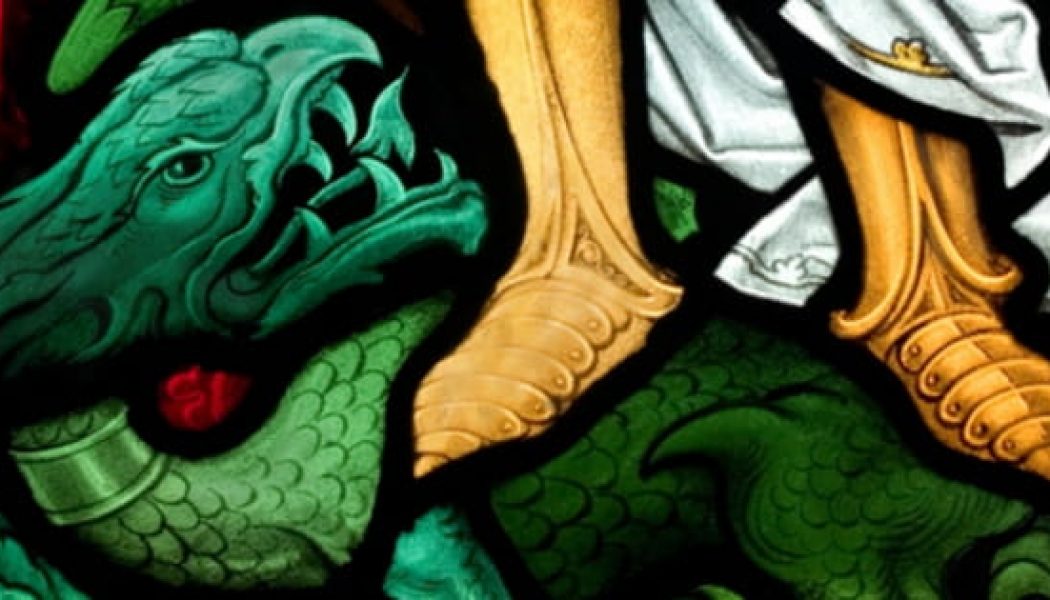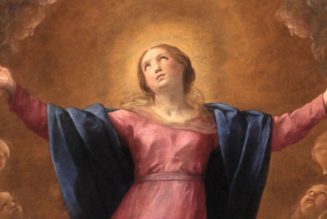
The people who will experience the fullest meaning of Christmas on Tuesday are the people who know and feel that there is something in them that needs to be destroyed. It is true, as John said (John 3:17), that “God sent the Son into the world not to condemn the world, but that the world through him might be saved.” But he saves by destroying. Like a doctor who amputates a foot full of gangrene or cuts out a cancerous lung.
Jesus Came to Destroy Something
Jesus said, “Those who are well have no need of a physician, but those who are sick; I came not to call the righteous but sinners” (Mark 2:17). The only people who understand Christmas and embrace Christmas for what it is are people who feel sick, and who desperately want their sickness destroyed. Unless you welcome Jesus as a destroyer in your life, you can’t have him as a Savior.
The point of this morning’s message is taken from 1 John 3:8, “The reason the Son of God appeared was to destroy the works of the devil.” Christmas is the celebration of the appearing on earth of God’s eternal Son. And the reason he appeared is to destroy the works of the devil. So the reason there is a Christmas is because God aims to destroy something. Or if you like the imagery of contemporary space odysseys, picture Christmas as God’s infiltration of rebel planet earth on a search and destroy mission. Or if you come from the Dr. Kildare and Ben Casey era, picture Christmas as the arrival of a single brilliant doctor in an isolated Appalachian village ravaged by a deadly virus. Or, if you antedate all that, picture Christmas as the arrival of John Joseph Pershing as full commander of the U.S. 1st Army on the Western Front of the Argonne Forest in the fall of 1918.
The reason the Son of God appeared was to destroy the works of the devil. The spaceship has landed, the doctor has arrived, the general has taken command—mission: search and destroy the works of the devil.
Three Questions About the Christmas Mission
There are three questions I want to try to answer in relation to this Christmas mission.
- What did the Son of God come to destroy?
- How did he destroy it?
- How can we participate personally in his victory?
1. What Did the Son of God Come to Destroy?
1 John 3:8 says he came to destroy “the works of the devil.” What are the works of the devil? Let’s work out in concentric circles from the term “works of the devil” in 1 John 3:8. The closest concentric circle is the sentence before in verse 8a and the sentence after in 1 John 3:9. Verse 8a: “He who commits sin is of the devil; for the devil has sinned from the beginning.” Then comes our text that the Son of God came to destroy the works of the devil. 1 John 3:9: “No one born of God commits sin; for God’s nature abides in him and he cannot sin because he is born of God.”
The “Works of the Devil” Are Sins
First, John says the devil sins and those who sin are his. Then he says Christ came to destroy Satan’s works. And then, he says, so no one born of God commits sin. Wouldn’t you agree then that the “works of the devil” which the Son of God came to destroy are sins? Surely we should put the word “therefore” at the beginning of 1 John 3:9. “The Son of God appeared to destroy the works of the devil. Therefore no one born of God commits sin.” When people commit sin, it is a work of the devil. The work of the devil is to tempt people to sin. When they sin, his work is accomplished. So what the Son of God came to destroy is not just the guilt of sin (which might enable us to stay like we are and go right on sinning into heaven) but actually sinning. The Son of God came to destroy sinning. The enemy on the rebel planet is sin. The deadly virus in the Appalachian village is sin. The force to be conquered on the Western Front is sin. Christmas is God’s invasion of enemy territory to rescue a people from the devil and destroy the sin in their lives.
Sin Is Lawlessness
Now let’s take in another concentric circle of our text and try to define the “works of the devil” more precisely. What is sin? 1 John 3:4: “Everyone who commits sin is guilty of lawlessness. Sin is lawlessness.” The law in John’s mind here is not the U.S. Constitution. It is God’s law. It’s the expression of God’s revealed will for his creatures.
Lawlessness is living as though your own ideas are superior to God’s. Lawlessness says, “God may demand it, but I don’t prefer it.” Lawlessness says, “God may promise it, but I don’t want it.” Lawlessness replaces God’s law with my contrary desires. I become a law to myself. Lawlessness is rebellion against the right of God to make laws and govern his creatures.
So now we can see better what the Son of God came to destroy. The “works of the devil” are sin. Sin is lawlessness. And lawlessness is rebellion against the right of God to rule over us. The work of Satan is to tempt us to reject the authority of God and become like God ourselves. Satan works to nurture and cultivate the pride that puts its own desires above the law of God. This is lawlessness; this is the essence of sin; and this is what the Son of God came to destroy in you and me.
2. How Did He Destroy It?
The text gives two answers and we need to ask how these two are related to each other.
Two Answers—His Appearing and the New Birth
First, 1 John 3:8 says the Son of God appeared to destroy the works of the devil. In other words, the way Christ destroys sin is by appearing—that is, by coming from heaven and being born in the form of man. Probably John has in mind here not just the presence of the Son of God but all that he did by living and dying and rising from the dead. So the first answer to how Christ destroys the works of the devil is that he appears: he comes to live and die and rise again, and somehow that destroys sin.
The second answer is in 1 John 3:9. “No one born of God commits sin.” Sin is conquered, the work of the devil is destroyed, when a person is born of God.
So there are two ways the works of the devil are destroyed in this text. One is by the appearing of the Son of God and the other is by new birth. Now how are these two related? Why are both necessary and not just one? It’s not enough for Jesus to come and die and rise again. People must be born of God. Otherwise the works of the devil are not destroyed. Sin goes on reigning. Nor is it possible that God should just cause people to be born anew without the appearance of the Son of God. Both are necessary. So we ask, how are these two related?
What It Means to Be Born of God
To answer this we need to see what it means to be born of God. 1 John 3:9 tells us: “No one born of God commits sin; for God’s nature (literally: God’s seed) abides in him and he cannot sin because he is born of God.” Now anybody can sin who wants to sin. So when John says that a person born of God cannot sin, he must mean that a person born of God has new wants, new desires. It’s like a birth; something new has come into existence. Paul calls it a new creation (Ephesians 2:10; Ephesians 4:24). Jeremiah calls it a new heart (Jeremiah 24:7). Ezekiel calls it a new spirit (Ezekiel 36:26). Being born of God is being changed by God so that the dominion of sin is broken.
How is it broken? 1 John 3:9 says that when a person is born of God, God’s seed abides in him. That’s why he cannot sin. The image is taken from ordinary human birth. When a father begets a child, the father’s seed abides in the child. Something of the father is in the child and it makes him like his father. God’s character is the very opposite of sin, therefore the child of God will be like his Father—he will not be able to sin.
Why John Isn’t Teaching Sinless Perfection
I know this sounds like John is teaching sinless perfection. But there are several reasons we know he isn’t. One is that the Greek verb “commit sin” or “sin” in 1 John 3:9 implies continuous action. It would be well translated, “No one born of God is content to keep sinning, for God’s seed abides in him, and he cannot be content to keep on sinning because he is born of God.”
The most obvious reason (even if you don’t know Greek) we know John isn’t teaching sinless perfection is what he says in 1 John 1:8 and 1 John 1:10, “If we say we have no sin, we deceive ourselves and the truth is not in us . . . if we say we have not sinned, we make him a liar, and his word is not in us.” So John goes so far as to tell Christians that it is a sin to say you are sinless.
The Christian Life Is Walking in the Light
Well, if a person who is born of God does not become sinlessly perfect in this life (1 John 3:2) and yet (as 1 John 3:9 says) cannot be content to go on sinning, what is the Christian life? How should we describe it?
1 John 1:7 gives a lot of help here. “If we walk in the light as he is in the light, we have fellowship with one another and the blood of Jesus his Son cleanses us from all sin.” The blood of Jesus will cleanse you from all your sin, if you walk in the light. So walking in the light is very different from walking in the dark, but it does not mean sinless perfection. 1 John 3:7 teaches that if you walk in the light, the sins that you commit are cleansed—forgiven, swept away, blotted out—by the blood of Jesus.
Walking in the light doesn’t mean that you are sinless; it means you see your sins now in God’s light and respond to them the way God does. 1 John 3:9 is a clear parallel to 1 John 3:7 and teaches this. “If we confess our sins (that corresponds to ‘if we walk in the light’), he is faithful and just and will forgive our sins and cleanse us from all unrighteousness (that corresponds to ‘the blood of Jesus cleanses us from all sin’).” A person who walks in the light “confesses sin.” That means he sees sin the way God does and agrees with God. He hates sin, he is sorry for sin, he turns and flees from known sin. When sin is pointed out in his life, he does not bristle with self-righteousness; he confesses, admits, repents.
Walking in the light means having your eyes opened to the truth about God and sin and Christ.
When the lights are off in a room, you might be there with a horrid black monster called sin, ready to devour you, and with a great knight in shining armor called Christ, ready to save you, but you can’t see because you are in the dark. And in the dark the monster might have a warm, furry coat that feels attractive, and the armor of the knight might feel cold and forbidding.
But when the light goes on, you can see sin and Christ for what they really are: sin is a horrible destroyer and Christ is a glorious Savior. When the light goes on, sin doesn’t drop dead. The battle begins in earnest. You see it the way God sees it and you hate it and you confess it and you fight it.
Summarizing the Argument
Now let’s step back and see if we can gather up the loose ends of the argument. We’re on the second question of the message. The first was: What did the Son of God come to destroy? Answer: the works of the devil, namely, sin or lawlessness or rebellion. He came to give us victory over sin in our lives. The second question was: How did Christ destroy the works of the devil? We saw two answers. First, he did it by appearing at Christmas as the Son of God, living, dying for our sins, and rising again. Second, he did it through the new birth. 1 John 3:9 says that when we are born of God, we cannot sin. But we saw that this does not mean sinless perfection in this life; it means that God works a change in us so that we can’t be content to go on sinning.
Then we asked, How do these two ways of destroying the works of the devil relate to each other? How does the work of Christ in Palestine relate to the work of God in my heart? Or you might ask it like this: How does the blood of Christ work together with the new birth to destroy the works of the devil in my life?
And we saw the answer in 1 John 1:7. “If we walk in the light as he is in the light . . . the blood of Jesus his Son cleanses us from all sin.” Here the two answers for how the works of the devil are destroyed come together. Coming into the light of God is what happens when you are born again. The new birth is the sovereign work of God in which he turns the light on in our heart so that we see things the way he does. We see God as awesome in holiness, sin as horrible in ugliness, and Christ as a beautiful Savior. We bow before God in worship, we confess and turn from sin, and we embrace Christ as our hope. And while we walk in that frame of mind (in the light), the blood of Jesus cleanses us from all sin. The works of the devil are destroyed in our life. And Christmas is fulfilled.
The Answer to Question 2
So what is the answer to question two? How are the works of the devil destroyed? Two stages: 1) The Son of God appeared and died for our sins so that they can be washed away and the devil can no longer accuse us or discourage us with them. 2) But in order to experience this salvation from sin we have to be born of God. We have to have the eyes of our hearts opened so that we come into the light and see things the way God does and agree with God about the beauty of his holiness and the ugliness of our sin and the surpassing value of Christ. When that happens, the blood of Jesus his Son cleanses us from all sin and the works of the devil are destroyed.
I promised a third question but I’ve really already answered it.
3. How Can We Participate Personally in the Victory of Christ?
Let me refer to one more verse and close with an illustration. 1 John 5:4 says, “Whatever is born of God overcomes the world; and this is the victory that overcomes the world, our faith.” The way to participate personally in Christ’s victory over the world and the works of the devil is by trusting him—believing he is the very Son of God, with all that implies about his power to work for your good.
A Personal Illustration
Advent is a hard time for me spiritually. When I was a student and taught school, it was a time of relief and rest. But now it is very pressured. I tend to get discouraged and have to fight against the works of the devil in my life. The way I fight is by focusing on a promise of God. Sometimes it happens in strange ways.
Last week I woke up discouraged one morning and could barely drag myself out of bed. Then the thought entered my head, “Today my printer may come.” I had ordered a little dot-matrix printer to print out my sermons at home from the word processor. The thought that the printer might come today all of a sudden made me happy. The day seemed hopeful. I suppose it was like a kid feels the day before vacation. One possible bright spot conquered the gloom.
Then I went to my room to pray, and I read in Psalms 139, “Thy eyes beheld my unformed substance, in thy book was written every one of them, the days that were formed for me when as yet there was none of them.” The truth hit me that God has made all my days. And he has promised to work everything together for my good. In his mercy every day brings experiences that are one hundred times more valuable than a printer. He designs all my days for my strengthening and joy. The battle is to believe him—to get up in the morning and meditate on the truth that God has planned a day full of unexpected printers, even if they are veiled in affliction or tragedy.
Encouragement for Christmas
So my encouragement to you this Christmas is that the Son of God appeared to destroy the works of the devil—our sins and lawlessness and rebellion. The way he did it was by dying for sin and through the new birth. The way we participate in this victory is by trusting in the promises of God to work all things together for our good.
May the Lord open our eyes to his glory and give us this faith.
By John Piper. ©2012 Desiring God Foundation. Website: desiringGod.org
Check out our Christmas Facebook page at www.facebook.com/LuvChristmas.









